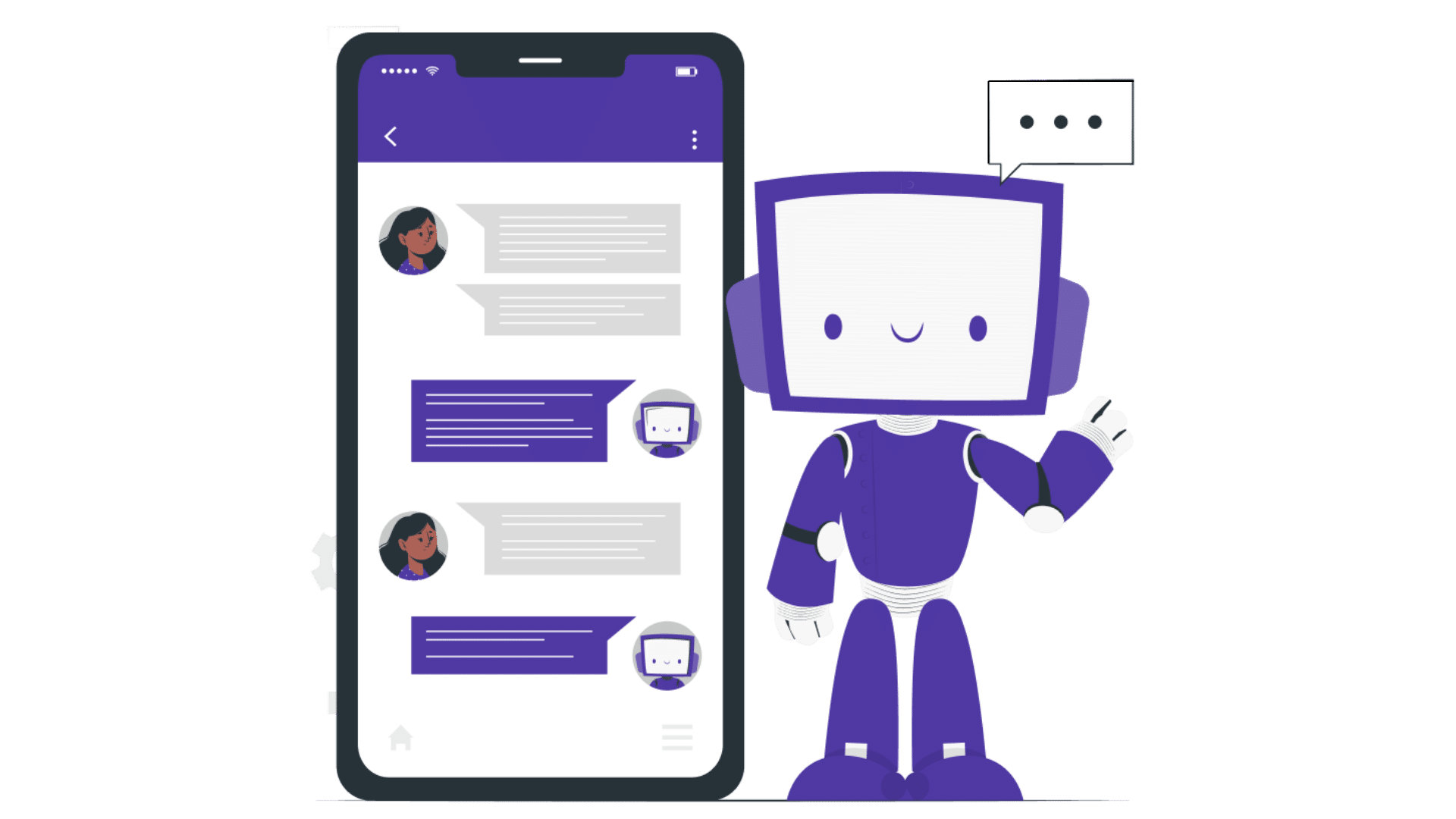
Did you know that the global market for AI in education is projected to reach $6 billion by 2025?
Technology is reshaping the education industry at an unprecedented pace. This growth is being fueled, in part, by innovative tools like chatbots, which are transforming how students, teachers and institutions interact.
But…
What exactly are these chatbots?
Why are they becoming so important in education?
How can you build a responsive chatbot for your educational institution?
By the end of this article, you’ll have answers to all these questions!
A chatbot for education is simply a bot that interacts with students, teachers and even parents, offering instant responses to queries and providing essential support round the clock.
There are two primary types of chatbots used in education:
AI-powered chatbots: These bots learn from user interactions and can offer personalised responses based on the data they gather over time. This adaptability makes them incredibly effective in providing tailored learning experiences.
Rule-based chatbots: Unlike AI-powered bots, these follow pre-programmed instructions and respond to queries based on specific keywords. While limited in adaptability, when they are integrated with an education CRM, they can transform the way you interact with current and prospective students.
More on this will be explained in later sections.
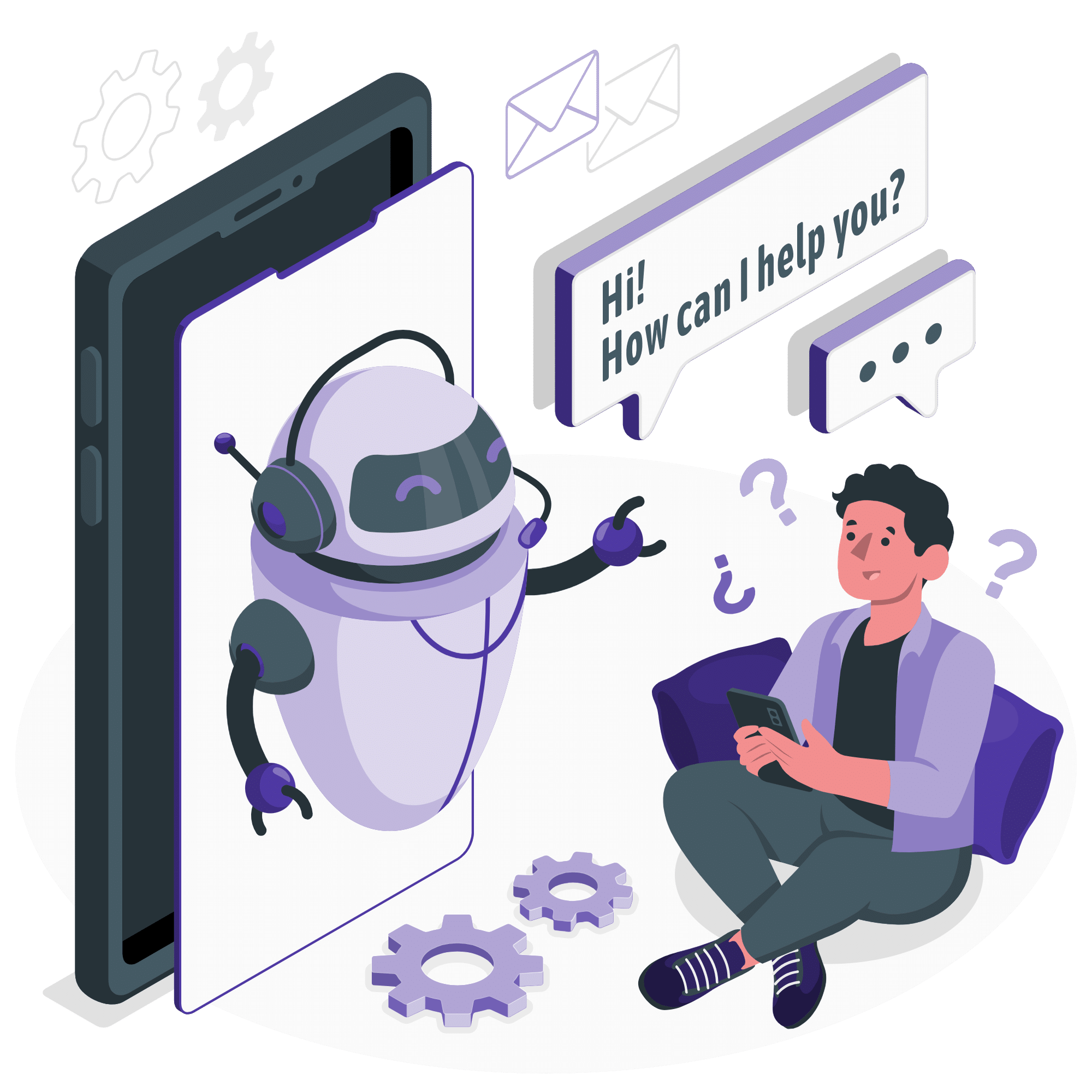
This is the decade of AI and automation and their impact on the education sector is no different. In this section, we’ll discuss some of the most important use cases and benefits of chatbot for education:
Handling the influx of queries during admission season can be overwhelming for both staff and prospective students. Chatbots simplify this process by automating administrative tasks like answering frequently asked questions about courses, application deadlines and eligibility criteria. They can also guide prospective students through the application process, providing a seamless experience without requiring constant human intervention.
Example: A student visiting your institution’s website at 10 pm could ask the chatbot about available courses and get an instant response, no waiting required.
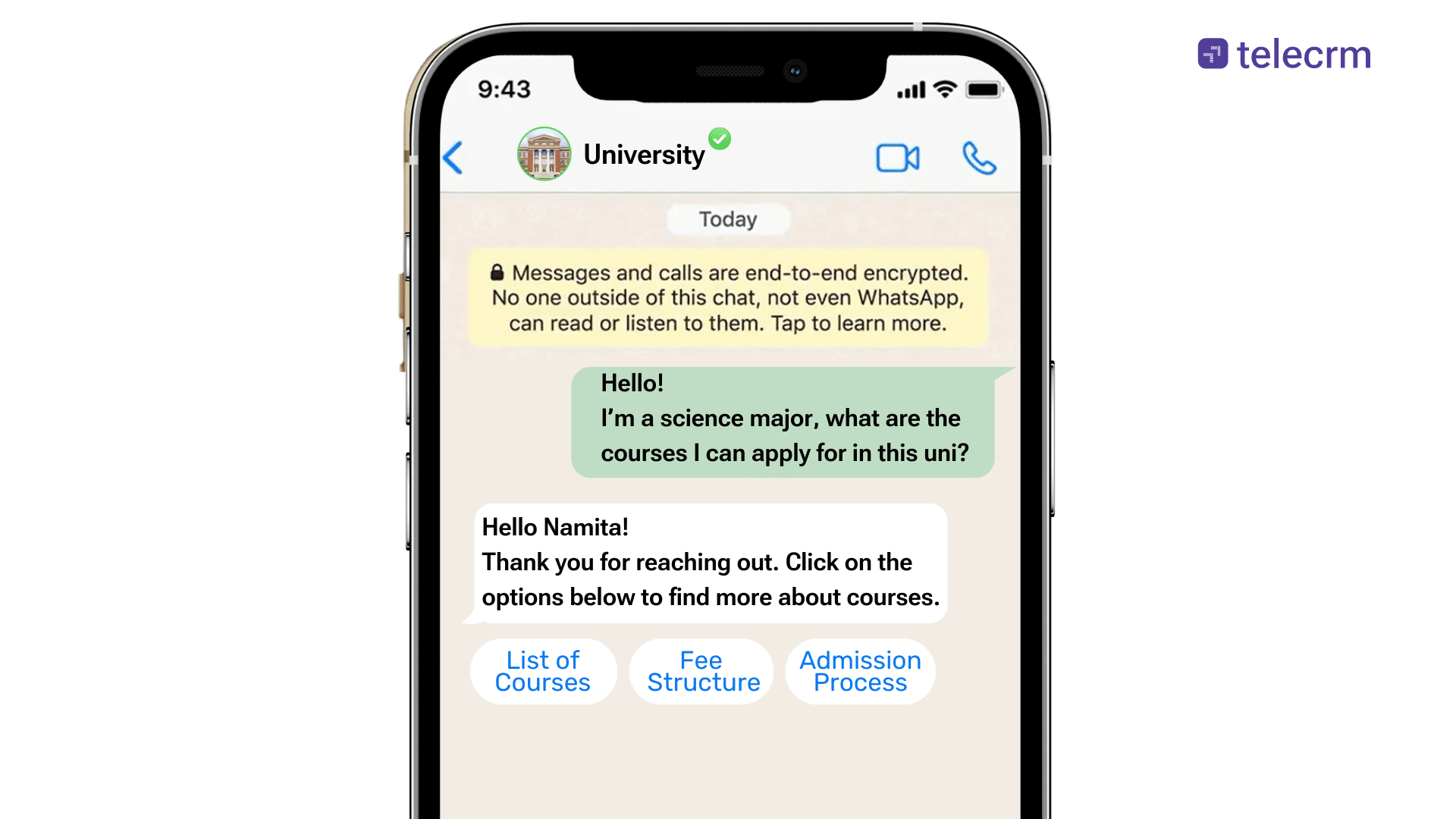
Students often get confused about deadlines for assignments or upcoming test dates. Chatbots, using predefined rules, can instantly answer these queries, ensuring students have the correct information without needing to reach out to teachers or sift through emails. Additionally, chatbots can help set up reminders for key academic deadlines, keeping students on track and reducing last-minute stress.
Example: A chatbot specifically designed for assignments and tests can provide students with instant answers about deadlines, exam timings and submission details, ensuring they always have the latest information.
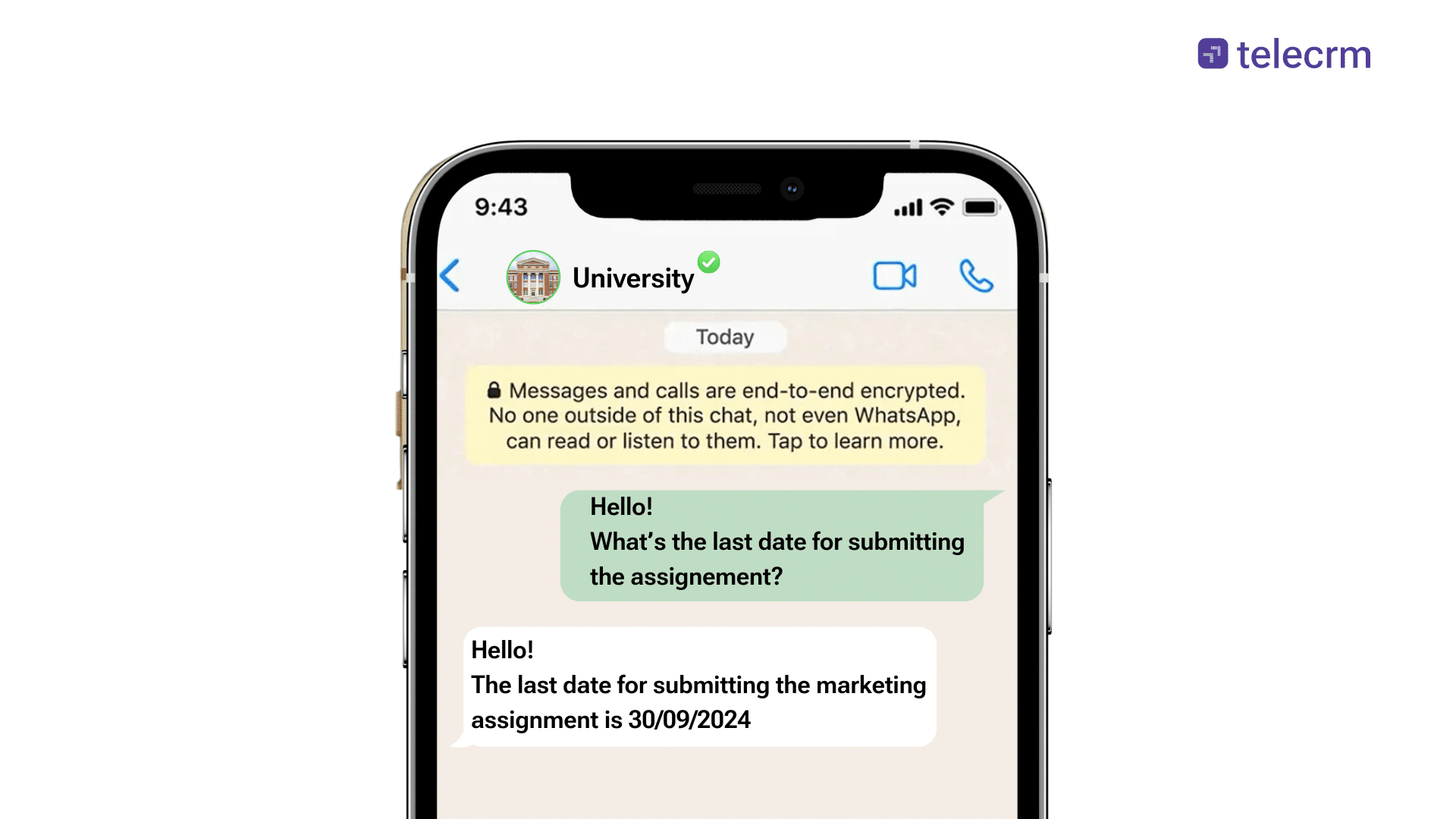
Tracking learning outcomes is a critical yet time-consuming task for educators. Chatbots can assist teachers by providing real-time data on each student’s performance, highlighting areas of improvement and suggesting additional learning resources. This feature also allows students to track their progress, empowering them to take control of their learning.
Example: A chatbot could notify a student about their performance in an online quiz, showing them which areas they need to revise before the next test.
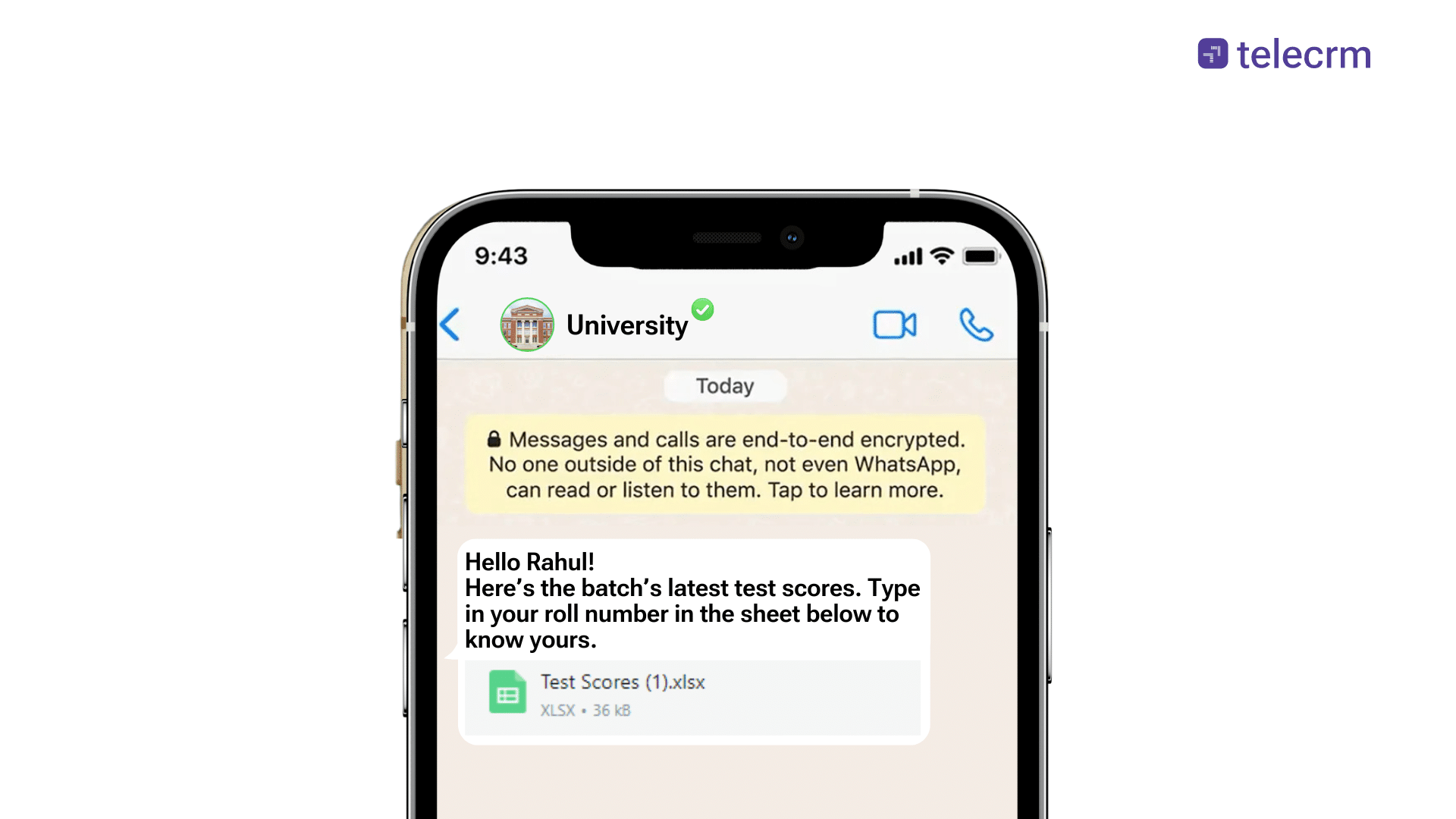
One of the biggest perks of chatbots in education is how they handle all those repetitive tasks that take up so much time for staff and students alike. Instead of spending hours answering the same old questions about course schedules, application deadlines or campus facilities, a chatbot can jump in with instant, accurate responses. This means administrative staff can focus on more important things and students get the info they need without the usual delays.
What’s great about chatbots is that they’re always available — 24/7! This means students can access help whenever they need it, even outside of office hours. Whether they have a question about an assignment in the middle of the night or need a reminder about an upcoming test, the chatbot is ready to assist. This kind of round-the-clock support makes students feel more connected and supported throughout their academic journey.
Personalisation is huge in education and chatbots really shine here. AI-powered chatbots can tailor the learning experience by analysing a student’s behaviour, preferences and performance. Based on this data, they can suggest additional resources, study plans or even personalised recommendations. This makes learning more relevant and effective for each individual student.
We all know how frustrating it can be waiting for an email response or trying to get through to someone in person. Chatbots make this so much easier by providing instant answers to frequently asked questions (FAQs) and common queries. Whether it’s about course options, attendance records or accessing learning materials, students can get their queries answered without the usual back-and-forth.
If you usually need twenty people to manage the constant flow of student queries, with a chatbot, you might only need two! Once set up, the chatbot can handle thousands of interactions at the same time without any extra expense, reducing the need for additional staff while maintaining top-notch service.
A chatbot for education usually integrates smoothly with your institution’s LMS, making it easy to access course materials, grading systems and student records. This means chatbots aren’t just stand-alone tools; they work as part of your existing educational system. By connecting with the LMS, chatbots can pull real-time data and give students updates about their coursework, grades and upcoming assessments — all in one place!
| Aspect | Chatbot | No chatbot |
| Response time | Instant, 24/7 availability for answering queries | Delayed, limited to working hours and availability of staff |
| Scalability | Can handle thousands of queries simultaneously without any additional cost | Limited by the number of staff; increased queries require more manpower |
| Consistency | Delivers accurate, pre-programmed responses every time | Responses can vary depending on the person or department handling the query |
Cost efficiency | One-time setup cost with minimal ongoing expenses | Requires ongoing salaries for staff as well as additional costs during peak hours |
| Personalisation | AI-powered chatbots can provide tailored recommendations based on student data | Requires manual effort from staff to personalise student interactions, which can be inconsistent |
Error reduction | Automated responses reduce the chances of any factual errors in communication | Human errors are more likely due to heavy workloads or deadline pressure |
Administrative efficiency | Automates repetitive tasks like answering FAQs and setting reminders. | Tasks like answering FAQs, and scheduling reminders require significant manual effort |
Student engagement | Keeps students engaged through automated reminders, real-time support and follow-ups | Engagement is dependent on staff availability, leading to potential gaps in communication |
Convinced you need an education chatbot in your business but not sure how you can go about doing it? The good news is that building a responsive chatbot for education is easier than it seems — as long as you follow the right steps. Let’s break it down:
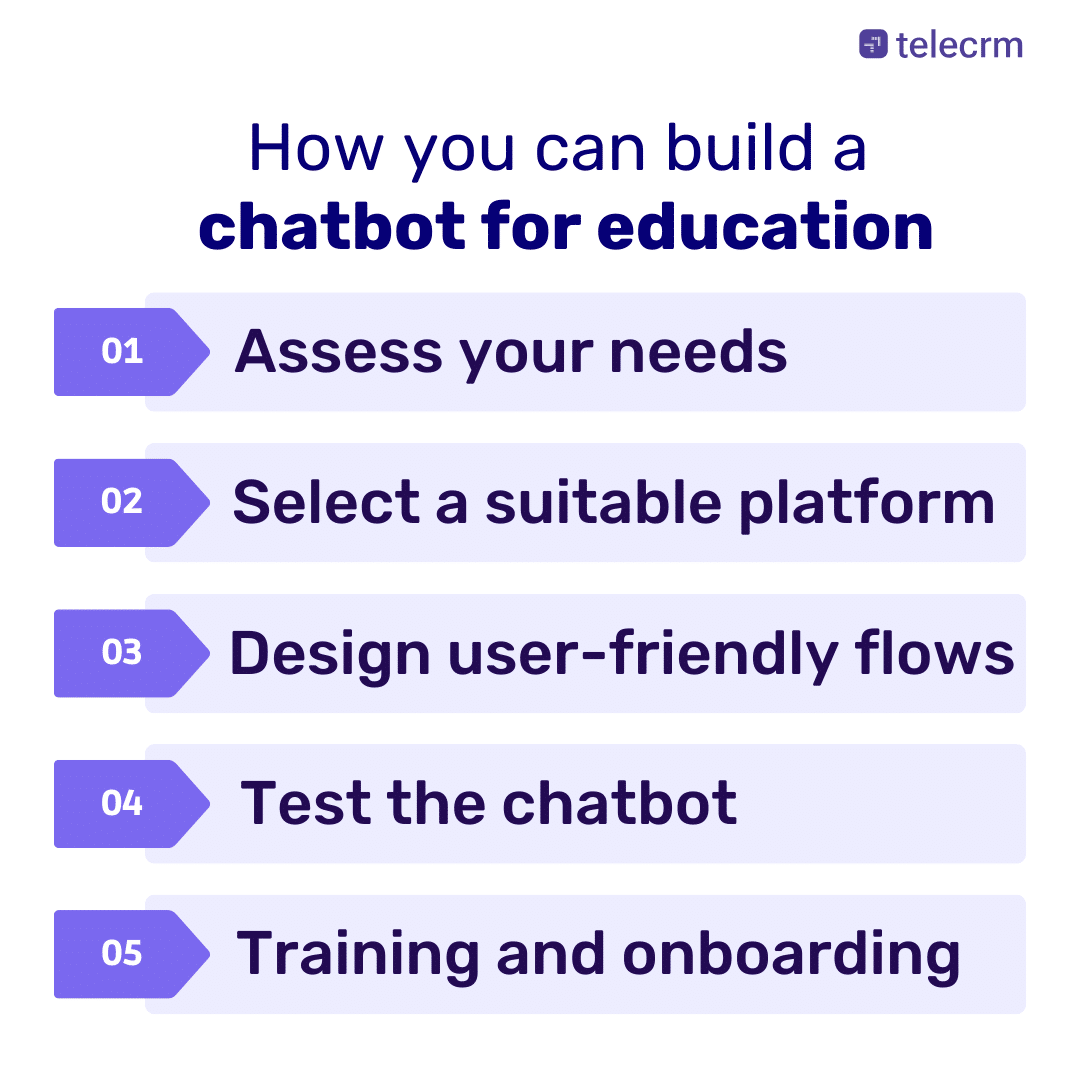
Think about the specific problems you want to solve. Are you aiming to provide personalised learning experiences? Or is your focus more on managing administrative tasks like admissions and student queries? That’ll define the type of chatbot you should go for.
If you want a chatbot to provide personalised learning, advanced academic counselling or handle complex interactions, you should consider an AI-powered chatbot. They are based on Natural Language Processing (NLPs) and can understand and interpret student queries, respond in a conversational manner and provide personalised support. These chatbots learn from data and become smarter over time, making them ideal for more dynamic student interactions. They can even act as virtual teaching assistants to resolve queries automatically.
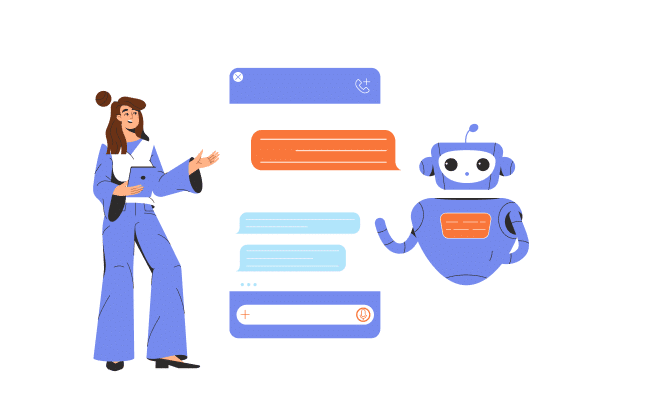
If your main goal is to manage repetitive queries like admission dates, assignment deadlines or simple FAQs — and you also want to scale your enrollments — then a rule-based chatbot is a great choice. These bots are simpler but very effective for handling predefined tasks. Plus, when integrated with a CRM like Telecrm, LeadSquared or Salesmate, a rule-based chatbot can not only manage student interactions but also help you automate and scale your admissions process and boost your enrollments.
And the best part — more often than not, education chatbots on such CRMs are WhatsApp–based that allow you to seamlessly interact with both prospective and current students on a platform they’re already familiar with.
Once you know the type of chatbot you need, the next step is to choose the platform on which you’ll build it. There are plenty of chatbot-building platforms available, such as:
Pre-built chatbot platforms (like ManyChat, Tars, or Chatfuel): These allow you to quickly create and deploy a chatbot with minimal technical knowledge
CRM platforms (like Telecrm, Zoho, LeadSquared, HubSpot): If managing student relations, keeping track of your conversations with them, promoting your educational institutions are your primary requirements, then an education CRM would be a better option
The heart of any successful chatbot lies in its ability to engage users effectively. Spend time designing the conversational flows — the way the chatbot responds to different queries. Make sure the responses are clear, concise and aligned with the institution’s tone.
Start with simple queries like, “What’s the deadline for assignments?” or “How do I apply for a scholarship?”
Use guided responses to make the interaction easier. For example, instead of open-ended questions, offer clickable options like “Yes” or “No” to guide users through the conversation.
Tip: Don’t overload the chatbot with too many options. Keep it simple at the start and expand as you learn more about the types of questions students are asking.
Before launching the chatbot, run it through multiple tests. Start by simulating different user scenarios to make sure the bot responds accurately. Then, conduct a pilot phase where a small group of students, teachers or staff interacts with the chatbot. Gather their feedback, particularly student feedback on areas for improvement, such as response accuracy, user-friendliness and any missing functionality.
Tip: Pay attention to how well the chatbot handles unexpected questions. A well-designed bot should gracefully handle queries it doesn’t understand by either redirecting to human support or providing alternative solutions.
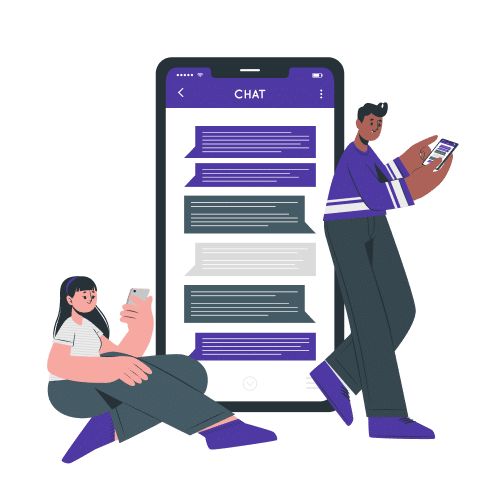
Once your chatbot is ready, make sure both students and staff know how to use it effectively. This step is often overlooked, but it’s crucial for ensuring high adoption rates. Provide simple tutorials or FAQs on how to interact with the bot and what kind of queries it can handle.
Tip: Run a workshop or send out instructional videos to introduce the chatbot to your institution. The more familiar your users are with it, the more value it will bring.
Building a chatbot isn’t a one-and-done process. You need to continuously monitor how the bot is performing, based on metrics like the number of queries resolved, response accuracy and user satisfaction. Regularly update and improve the bot’s conversational flows and capabilities to ensure it stays relevant and useful as your institution’s needs evolve.
Tip: Gather regular feedback from students and staff to find out which areas need improvement. This feedback loop will help you fine-tune the chatbot and make it even more responsive over time.
If you’re involved in running or overseeing the administrative activities of an educational institution, you know how helpful educational chatbots can be in terms of handling inquiries, resolving common FAQs and streamlining the admission process. So it’s time for you to take action!
The type of chatbot you should go for depends on your specific use cases. If you already have a student record management system in place then an AI chatbot is the most sensible option, but if you’re looking for a system that manages students’ entire lifecycle in addition to providing an intuitive chatbot functionality, a CRM is what you should go for.
If the latter has piqued your interest, we’d like to let you know that Telecrm is an all-in-one education CRM with comprehensive features including:
Rule-based chatbot for education
Omnichannel communication
Student lifecycle tracking
Follow-up management
Workflow automation and much more!
Visit Telecrm’s website or book a free demo to know more!


© Copyright 2025 Telecrm.in - All Rights Reserved • Privacy Policy • T&C
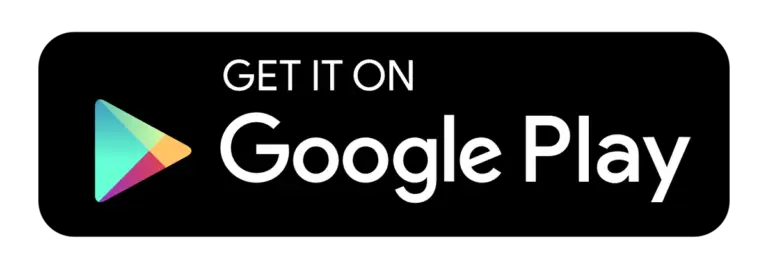

© Copyright 2025 Telecrm.in - All Rights Reserved • Privacy Policy • T&C